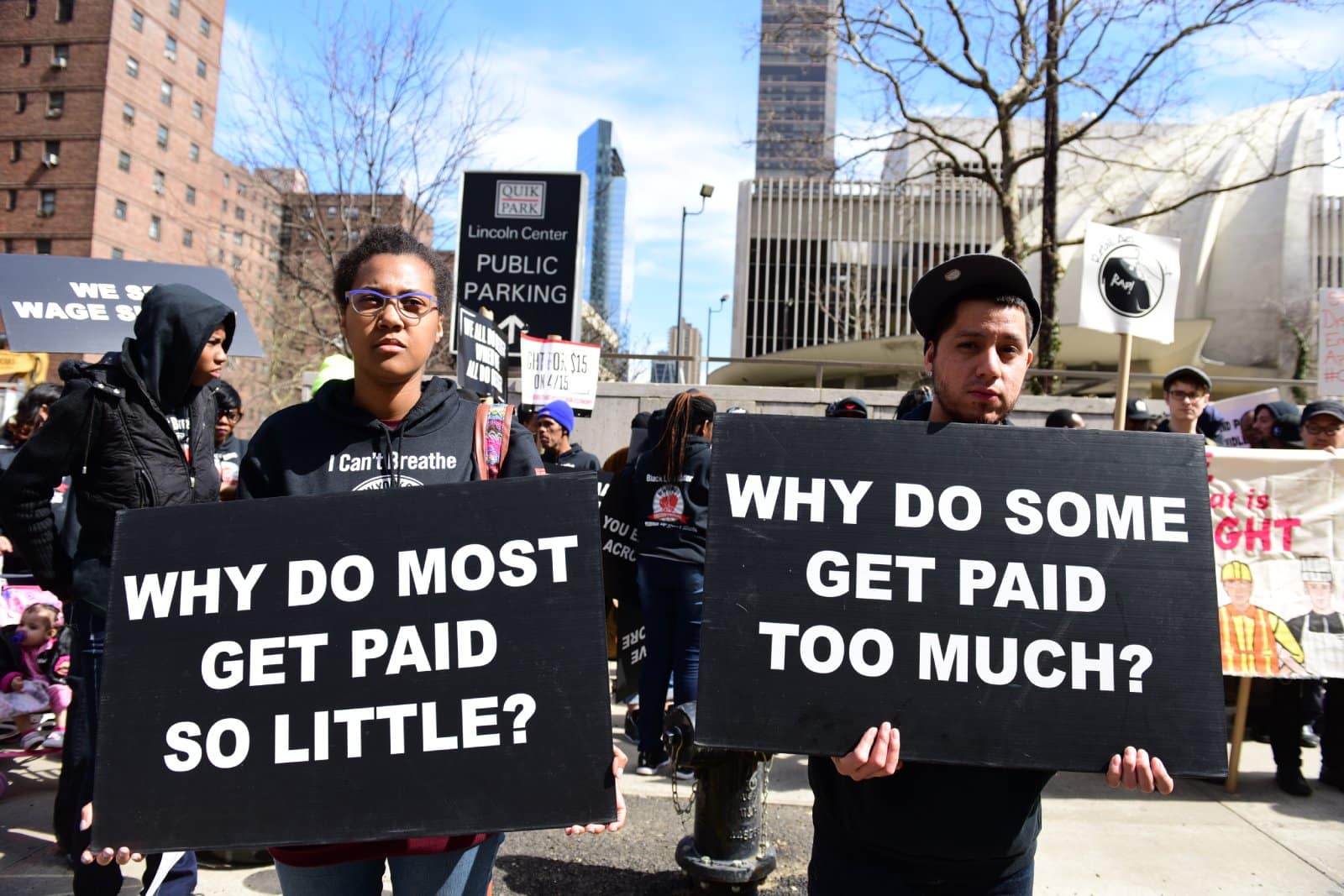This week, there’s been a considerable outcry after an El Pais article delved into the pay discrepancies in America’s biggest retail chain, Walmart. Here’s what the report had to say.
Walmart’s Wage Chasm

According to El Pais, there’s nowhere that the American wage gap is more pronounced than at Walmart, a chain that made over $648 billion in the period between January 2023 and January 2024.
CEO’s Bounty

Managers at Walmart have it good. Last February, John Furner, Walmart CEO, announced that their salaries would be increasing and their annual bonuses would now include stock grants.
Inside Walmart’s Pay Structure

From April this year, the base rate for a Walmart Supercenter manager will rise to $128,000, up 9% from last year.
They’ll also receive up to $20,000 in stock every year as a store-based performance bonus and also have the chance to receive up to 200% in their annual bonus.
Stock Grants and Salary Surges

Managers of smaller stores aren’t left out either – they’ll receive a substantial pay rise and are eligible to be awarded $10-15,000 in stocks per year.
Retail Royalty

El Pais reports that in total, Walmart Managers could earn up to $400,000 a year, making them one of the top-paid professions in the U.S. Compared to Europe, where the average pay for a supermarket manager is around €21,000-43,000, Walmart is leading the trend.
Managerial Fortune

While this move has drawn global attention for its bold approach to compensation, it also reveals a longstanding issue within the multinational retail giant: the glaring disparity in pay between its managerial staff and its frontline workers.
Frontline Frustration

El Pais explains that despite these industry-leading rates for managers, their frontline staff are paid between $14 and $19 per hour.
Living Wage Dilemma

Whilst this is a large increase on the national minimum wage of $7.25, according to El Pais calculations (with help from MIT’s living wage calculation), it is much less than individuals need to maintain a secure standard of living.
Walmart Workers’ Struggle for Fair Pay

Their calculations put the national average living wage at around $22 an hour “for a household with only one working adult and no children.”
The Reality for Walmart Employees

The lower end of Walmart’s wages falls below the minimum wage set by 15 states, which has intensified concerns about fair compensation for essential workers.
Payday Divide

By all accounts, El Pais indicates that frontline employees responsible for the day-to-day operations and customer interactions are grappling with poor working conditions and meager wages.
Below the Line

Walmart workers’ low pay has been an open secret for a long time.
Sam Walton, Walmart’s founder, outlined this strategy in his autobiography, writing, “No matter how you slice it in the retail business, payroll is one of the most important parts of overhead, and overhead is one of the most crucial things you have to fight to maintain your profit margin.”
Walmart’s Wage War

By keeping wages low, Walmart can maintain its competitive pricing and market dominance.
However, this strategy has come under scrutiny for its impact on workers’ welfare, especially as Walmart is a leading employer of people reliant on government assistance programs like Medicaid and the government’s food assistance program SNAP.
Union Battlefront

Walmart has been a staunch critic of organized labor groups and unions. They’ve consistently resisted efforts to unionize their staff and have been accused of using illegal measures to deter their workers from joining a union.
Workers’ Rights Clash

This has fueled tension in the workforce, and despite many unions attempting to gain a foothold within the company, the vast majority of its stores are union-free.
Walmart’s Labor Landscape

El Pais reports that labor groups and unions have intensified their calls for fair compensation and improved working conditions, although it doesn’t seem to have affected Walmart’s practices.
Fair Pay Fight

The corporation’s reluctance to raise its hourly wage to $15 puts it at odds with competitors like Target, Costco, and even Amazon – which itself doesn’t have a great reputation for workers’ rights.
Market Dominance, Worker Discontent

While Walmart’s high salaries for managers may attract attention, they are sustained by the low wages of frontline workers.
Walmart’s Role in the Retail Sector

Despite its mission to help customers stretch their paychecks, the company’s principles prioritize its bottom line, leaving many workers struggling to provide for their families.
Compensation Conundrum

The report into Walmart’s reliance on low-wage labor has intensified broader concerns about income inequality in the retail sector.
As the debate over fair compensation rages on, Walmart’s role as a market leader continues to shape discussions on labor practices and economic equity.
Millennials Are Over It: 25 Reasons Woke Culture Is Losing Its Charm

Has the push for progress tipped too far into preachiness? Here’s why many Millennials might think so. Millennials Are Over It: 25 Reasons Woke Culture Is Losing Its Charm
Is It Time Boomers Paid the Price for America’s Economic Inequality?

The American Dream feels more elusive than ever, especially for younger generations. What was once achievable through hard work now faces significant hurdles, from skyrocketing college costs to the challenging pursuit of homeownership. Here’s a look at why it’s tougher for Millennials and Gen Z compared to Baby Boomers. Is It Time Boomers Paid the Price for America’s Economic Inequality?
Rent Crash in California: Landlords Scramble as Prices Take a Hit

California’s rental market is taking a nosedive, with major cities seeing huge drops in rent prices. Rent Crash in California: Landlords Scramble as Prices Take a Hit
Featured Image Credit: Shutterstock / Marie Kanger Born.
The content of this article is for informational purposes only and does not constitute or replace professional advice.
The images used are for illustrative purposes only and may not represent the actual people or places mentioned in the article.





Leave a Reply